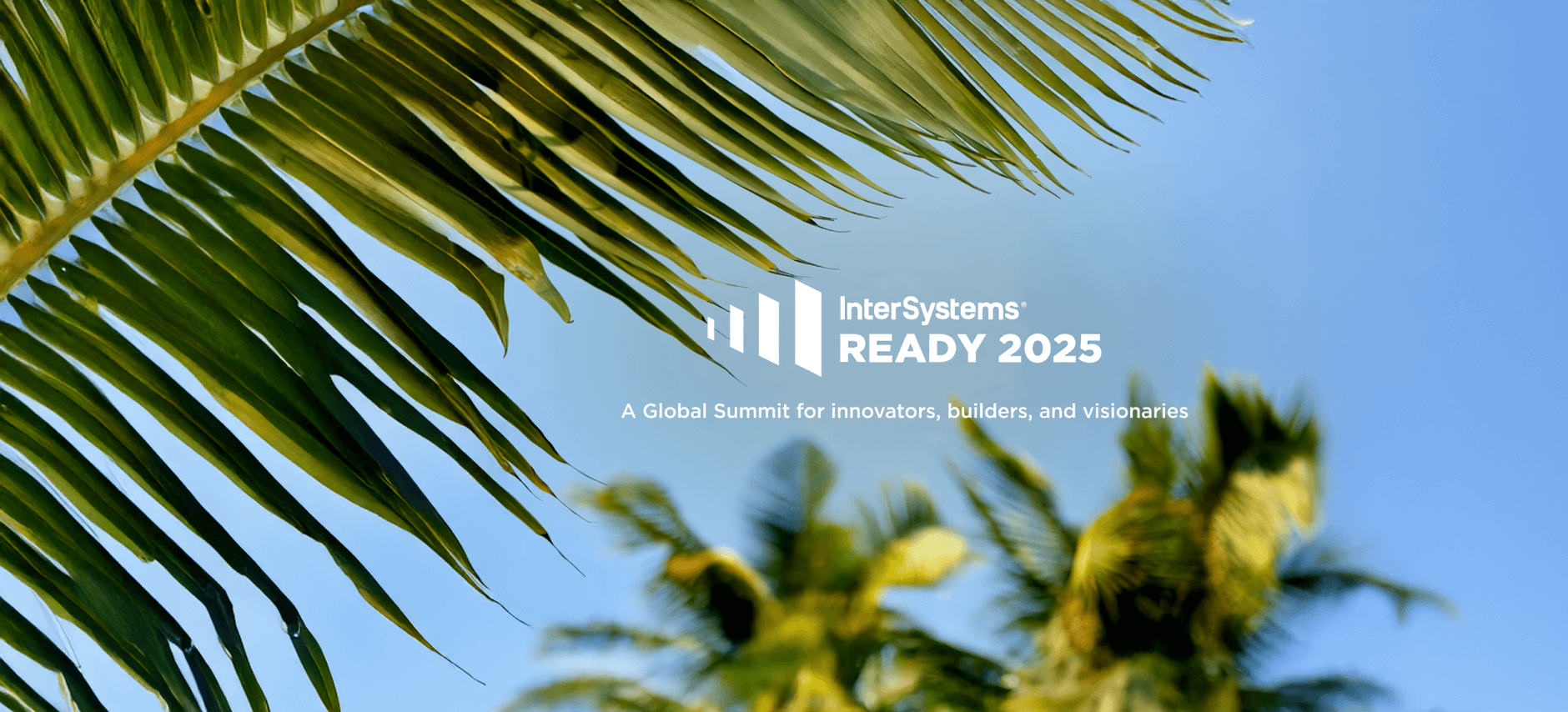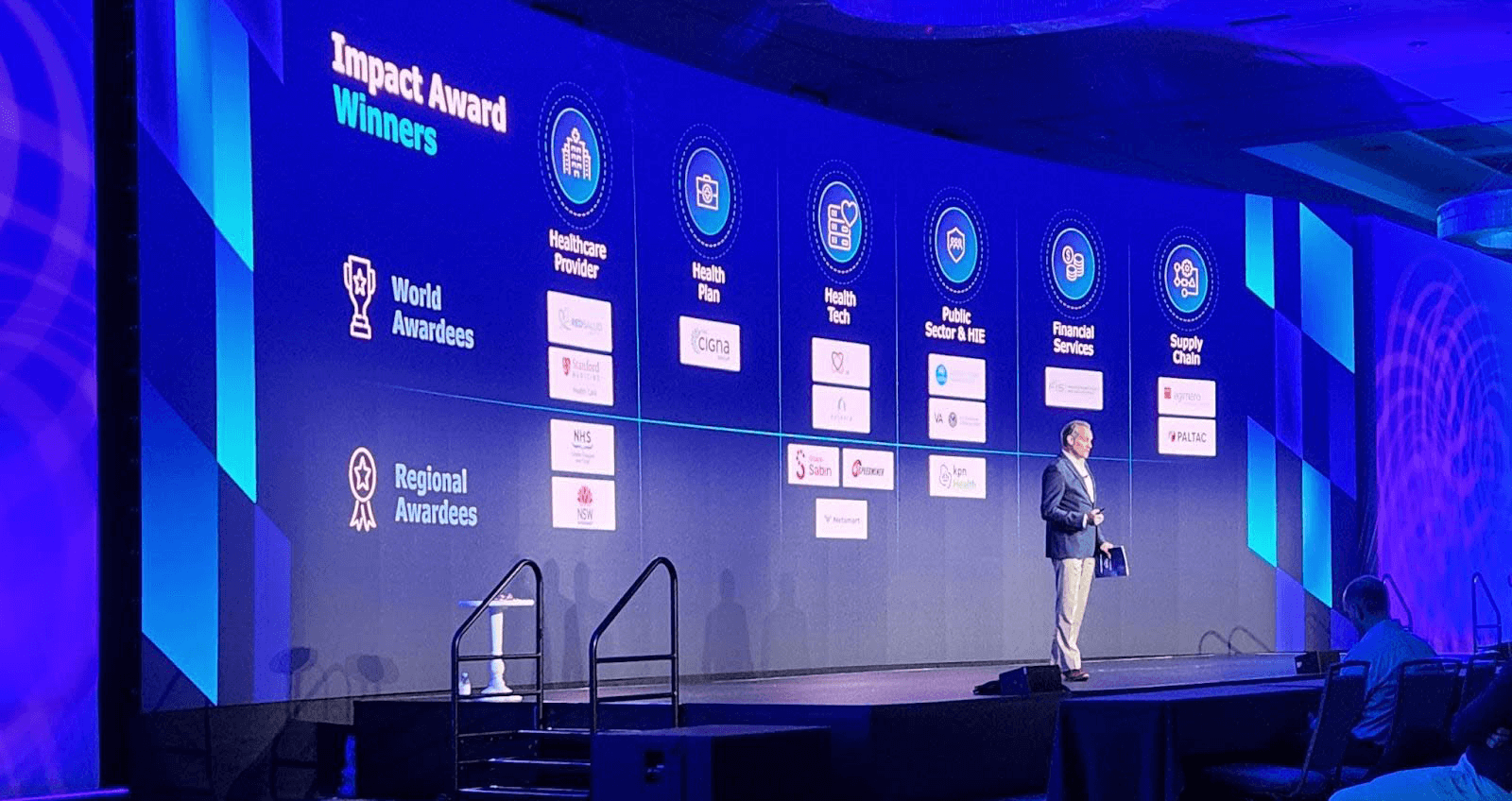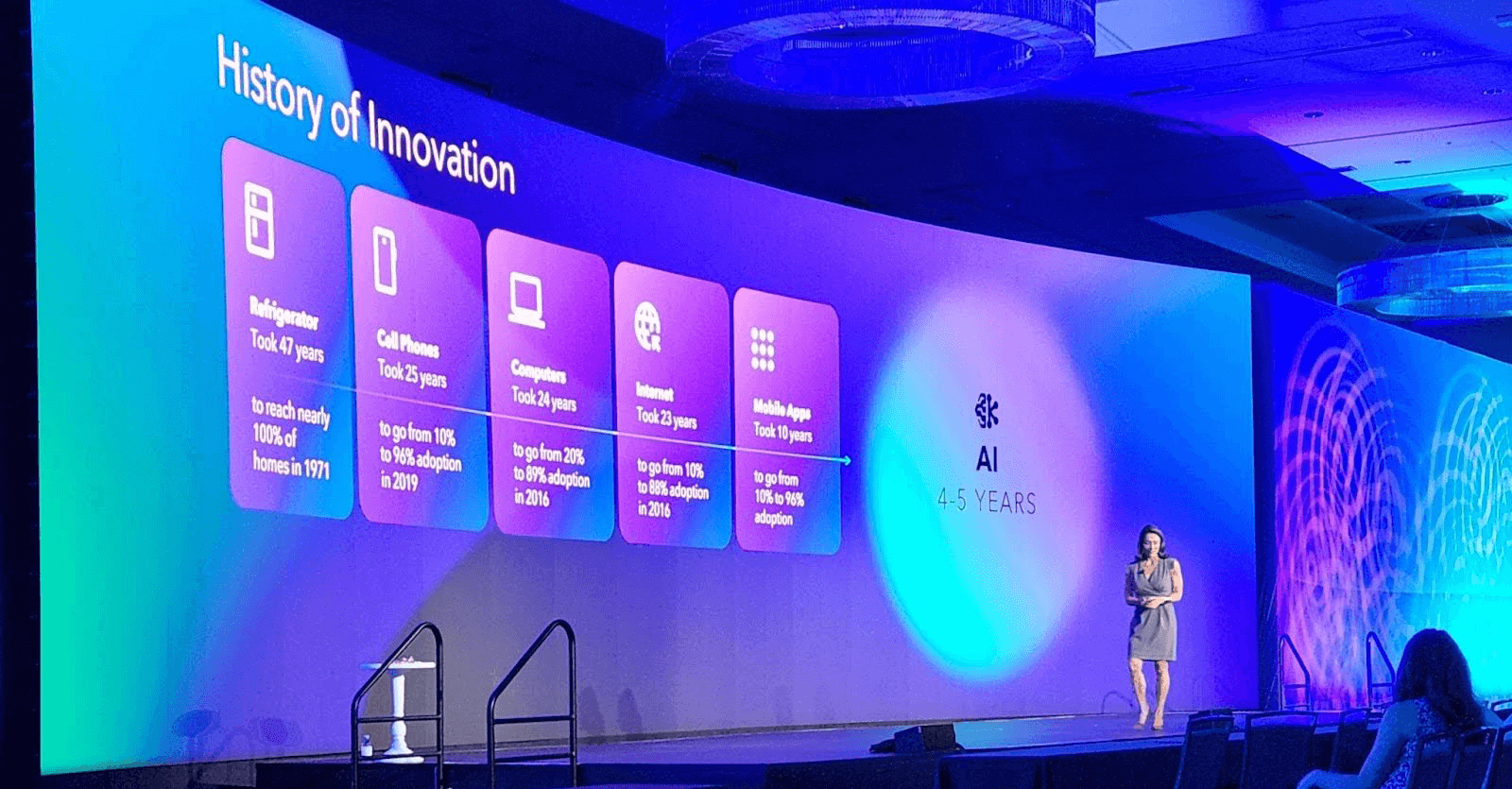
The Wednesday Keynote Session featured presentations on various aspects of innovation, technology adoption, and the future of healthcare.
READY Games Winners
- Most Creative Use of AI: ELAHealth was recognized for its innovative application of AI in explaining the complexities of health insurance.
- Best Use of Copilot for InterSystems BI: Michael Braam received an award for his exceptional use of Copilot in InterSystems Business Intelligence.

Dr. Phil Budden on Corporate Innovation and Impact Awards
In this presentation, Dr. Phil Budden, Senior Lecturer at MIT’s Management School, discussed the Impact Awards: Insights on Corporate Innovation. The judging panel for the MIT Impact Awards included Budden, Leslie Owens, and Michael Schrage.
Budden issued a “call to action” to make next year’s awards more challenging. For future conference participants, quantifiable innovation will be a differentiator. Revenue or cost savings are just one way to quantify a solution’s impact.
The MIT approach to innovation follows an “Inception -> Impact” model. First, an “idea about a problem” is defined as a match between a problem and a solution. A key question posed is whether people would pay for the proposed solution. Budden warned against “innovation theatre,” emphasizing the need for practicality and seeing innovations through to impact. While profit is often associated with impact, impact is more encompassing, including passion for community improvements and patient outcomes beyond just revenue.
Budden then discussed the need to emphasize the right levels of leadership to improve and accelerate innovation, specifically in the middle layers of leadership, which are more important than typically thought as drivers of innovation.
The three layers are:
- Senior Leaders: Architecting leaders.
- Middle Leaders: Enabling leaders, often crucial for managing innovation, ensuring time, and prioritization.
- Frontline Leaders: Entrepreneurial leaders who have time to experiment with technology and ideas.
Budden emphasized that each level has a distinct role and responsibility in driving innovation, and setting the right incentives at each level is critical.
In the end, attendees were encouraged to celebrate their own innovation and learn from this year’s awardees. Budden wants to see quantifiable innovation extend beyond just financial impact.
Tom McCoy on Customer Innovation at Mass General Brigham
Dr. Tom McCoy, Director of Research, Center for Quantitative Health, Mass General Brigham, discussed clinical engineering at Mass General Brigham, noting that despite its high-end reputation, the reality involves basic and challenging conditions for clinical equipment like wheelchairs.
Core functions of clinical engineering include:
- Break/fix and maintenance lights: This usually means routine diagnostics and repair.
- Planned maintenance: Every device has scheduled maintenance and inspection dates.
- Downtime Response: Quickly fixing offline equipment to maintain patient care schedules.
Key areas of focus include:
- Infusion Medication Management (over 10,000 devices)
- Point of Care Imaging
- Surgical AV, Navigation, and Robotics
- Life Supports and Monitors
Medical device integration is a significant challenge for biomedical teams, as staff spend considerable time manually moving individual numbers from equipment to medical records. The goal is to directly connect machines to the medical record. The current process involves devices “phoning home” to an aggregation engine, with HL7 messages moving to the medical record.
During COVID-19, there was a shift toward secondary web viewers and phones, with an increased focus on middleware and maximizing its utility. The aggregation server, however, was described as a “black box.”
McCoy referenced the Quadruple Aim: reducing costs, improving population health, improving patient experience, and improving workforce well-being. He highlighted patient safety, noting that 6% of errors are preventable, resulting in approximately 7,150 deaths annually.
McCoy discussed how we would be well-served to begin addressing the risk of professional burnout and workforce gaps in nursing and anesthesiology, in particular. He discussed a projected decrease in the number of prime-age workers per adult patient from 5 to 2 in less than 50 years. Drawing an analogy from air travel (from 5-person flight crews in the 1930s to 2-man crews in 50 years), he stressed the necessity of automation, including “closed-loop medical devices” that transduce signals, feed into control systems, and deliver medications or care. This initiative is seen as a “scary, but necessary” step. A significant increase in relying on devices and automation to cover the gap, coupled with workforce shortages and population growth, creates a new landscape for all of us.
McCoy noted that valuable data from devices, such as waveforms, heart rates, and alarms, currently sent via HL7, are often discarded or purged. The problem he brought to InterSystems was the need to retain this data and develop tools for future use. Mass General Brigham is already sending 1,500 HL7 messages per second.
The partnership with InterSystems resulted in the creation of a solution to store this data in the persistence layer, making it accessible via SQL projection for future tool development, which leverages the workforce’s existing SQL knowledge.

Sol Rashidi on “Your AI Survival Guide”
Rashidi used most of her presentation to review the history of data and advancements in technology that set the stage for AI, as well as the people around the world who are demanding it. Some of these developments included:
- The widespread availability and standardization of cloud data storage, driven by data commoditization, laid the groundwork for today’s AI capabilities.
- The surge in social media, IoT, and e-commerce sites led to the creation of the Chief Data Officer role, stemming from the idea that “data is the new oil.”
- Generative AI was propelled by the convergence of increasing compute power, storage, and the sheer volume and speed of data, enabling the execution of large-scale models.
Information is now doubling every 8-12 hours, making it impossible to review comprehensively. This overload necessitates “speed dating” content, leading to fragmentation, but also increasing demand for AI. Today, we are often “one prompt away” from obtaining our desired information.
However, as most of us know, not all information is accurate or valuable. Individuals need training in critical thinking, as democratized data does not automatically lead to democratized intelligence or wisdom.
Given all the pressures from the accelerating pace of information creation, the technical capacity we can leverage to do more in less time, and the growing demand for on-demand information that fits more convenient and efficient human-centered workflows, Rashidi believes that an AI-enabled knowledge economy is imminent. The question, however, is how we address the human aspects of readiness and human tolerance for the pace of progress. We often miss the critical importance of developing training programs that support effective change management.
Rashidi encouraged attendees not to miss opportunities to invest in helping those around them understand how AI can improve their work and what they need to do to get the most out of the tools that are quickly becoming available.
For more information about Rashidi’s views on preparing for the age of AI, Rashidi recommends her book, “Your AI Survival Guide: Scraped Knees, Bruised Elbows, and Lessons Learned from Real-World AI Deployments.”

